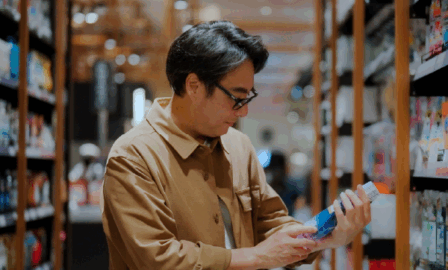Best Practices for Paid Landing Pages
Landing pages are web experiences where a brand can answer the most crucial questions a customer has about their product. Ideally, brands should have a single-page, cohesive experience where users are not forced to jump around a site, but rather one place where all the information exists, presented with as little friction as possible. On average, landing pages convert at +~30% higher compared to homepages or product pages. This increase in conversion rate equates to a massive upside in efficiency for brands looking to bring down customer acquisition costs (CAC) and increase their paid marketing budgets. Consumer attention spans are also getting tighter. It’s estimated that in 15 years, average attention spans have decreased from 12 seconds to just 8.25 seconds. This means brands only have a couple seconds to grab the customers interest and give a brief product pitch before converting. Moving paid media over to landing page experiences should have a dramatic effect on business performance in and of itself, but there are best practices for paid landing pages to keep in mind when creating and optimizing experiences for the future.
UX Should Match Audience and Intent
What is the key objective of your paid media? Is the business trying to drive sales? Generate leads? The user experience should mold to the key objective that your paid media is looking to drive.
A user’s intent who comes to your site from a Google Display Network is different than one who came in from Search. If users are coming from higher-funnel channels, focus on driving them to a landing page with a bit more education on the product and customer reviews to outline the value proposition. This helps build the case for the user for why they need the product and why they should convert.
For users entering the site through lower-funnel channels (search engine marketing (SEM), search engine optimization (SEO), Direct links, etc.), brands should put more of the user experience focus on removing friction to purchase. There should be a clear call-to-action (CTA) button or link display ideally above the fold. Sticky CTAs on mobile devices are also great for reducing user navigation anytime during the experience.
Segment Experiences by Platform
Users have different experiences and intent when browsing different platforms. Landing pages should mimic these experiences to speak differently depending on how the user is consuming their content online.
How is the platform being used? People use Snapchat and TikTok when they have a little bit of time to browse or want to be entertained. Users also engage with brands by using their thumb to swipe up or over on social platforms. While the conversion action might not happen on these platforms right away, they are great tools to get in, get first party data, and retarget users later.
Facebook, on the other hand, forces users to link on specific links or CTAs, and users are more likely to browse while they are bored. This allows for a greater opportunity to push users to monetizable landing pages through the specific medium they are already consuming their content.
Content is Key
Content is king nowadays. Your paid landing pages are no different. To get the best performance out of your pages, your content needs to mix the perfect balance to educate and inspire the user to convert.
Align content with intent. Personalize the landing page content with the consumers’ specific goals. Are they still window-shopping for other products and need more education? Did they specifically search brand terms in Google to get to the site? Understand how low or high the user’s intent is coming into the site and personalize the content to reflect their journey.
The hero image and copy are crucial. The hero header can either be an image or video. This should properly communicate the function of the product. The user should understand clearly how the product or feature works or solves a problem. Incorporate strong copy at the top as well. Again, this is a great opportunity for the brand to describe what the product does for the customer, rather than just tell them what the brand is selling.
Use clear messaging. Good landing page copy should answer the most important questions the user wants to know about the product in a concise, timely manner. What is the product? How does the product work? How does it make my life better? Why is the product the best? This is an opportunity for product teams to really put themselves in the consumer’s state of mind. The goal is to provide all the information for the customer to make an educated purchase. Continue to express the value of the product to the customer.
Do not forget social proof! Online reviews, testimonials, awards, certifications, and publication features are all great options for adding credence to the value your product is providing. Social proof should give perspective customers a glimpse of the benefits they can expect from the product. Create a “brag bar” or add badges from featured publications for extra awareness.
Test, Test, Test
Once paid landing pages are created, now the fun begins. Continuously test experiences by assessing different messaging, functionality, friction, etc. Testing can be as simple as changing the color of a CTA button or entire page creative overhaul. A/B testing will allow you to continue to move the performance needle and gain additional insights about the audiences’ intent.
Moving Forward
Switching paid media to landing pages is a commonly overlooked strategy by most marketing programs but can have dramatic and beneficial consequences in downstream conversion rates, average order value, and lifetime customer value. First interactions with brands are crucial for return engagement. Put your brand’s best foot forward by implementing these best practices with paid landing pages.
If you’re looking for assistance with more digital best practices, reach out to our team of digital experts.
Subscribe to Clarkston's Insights



